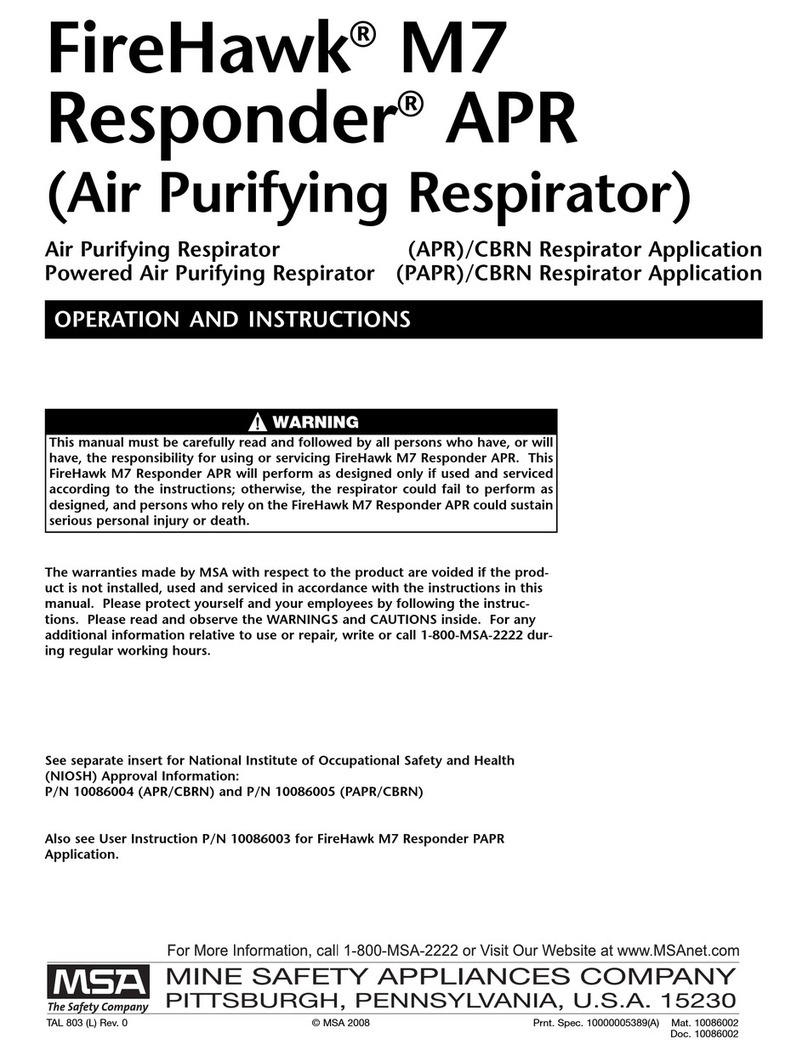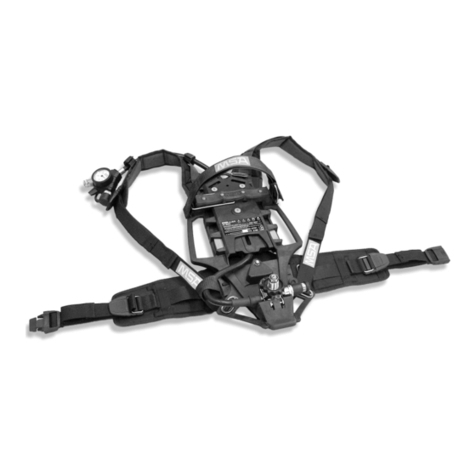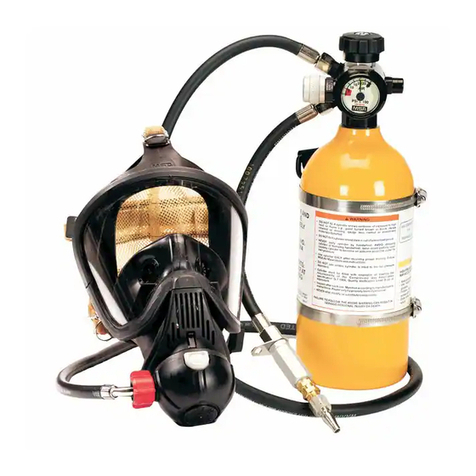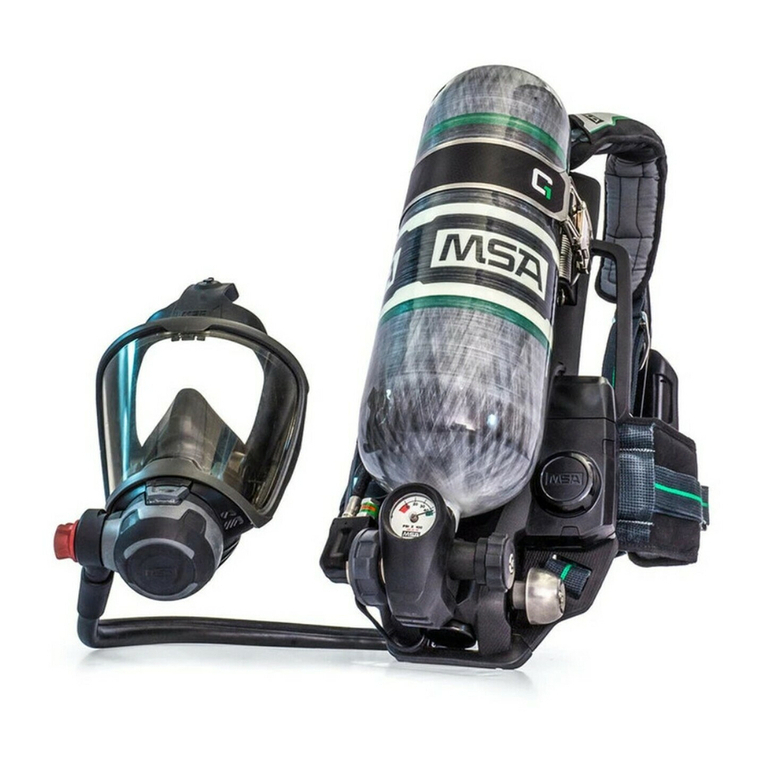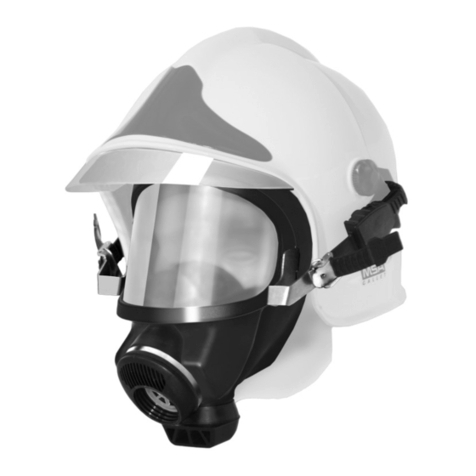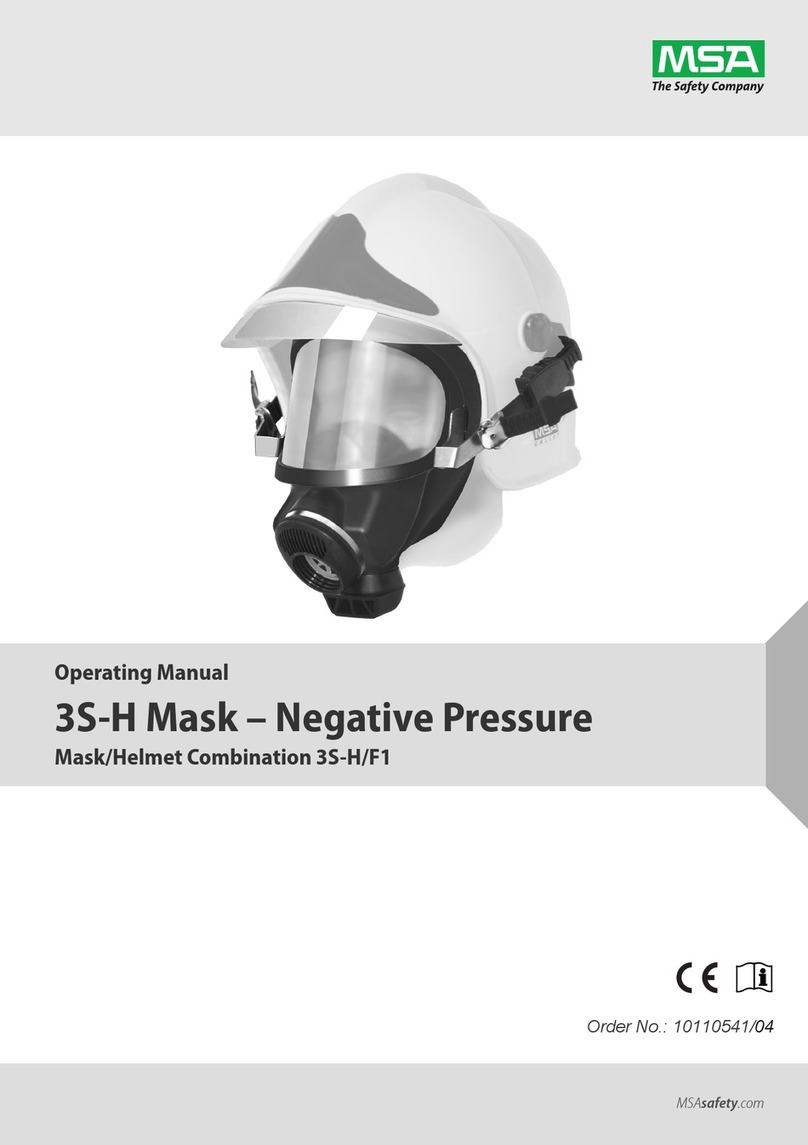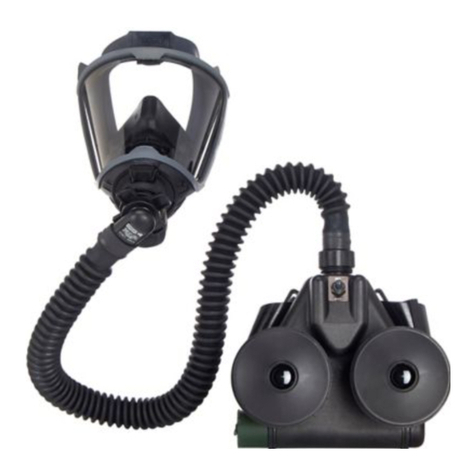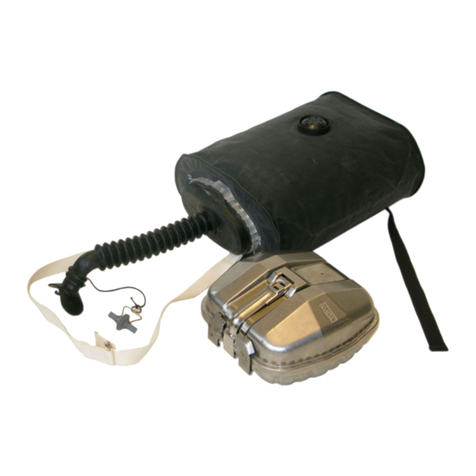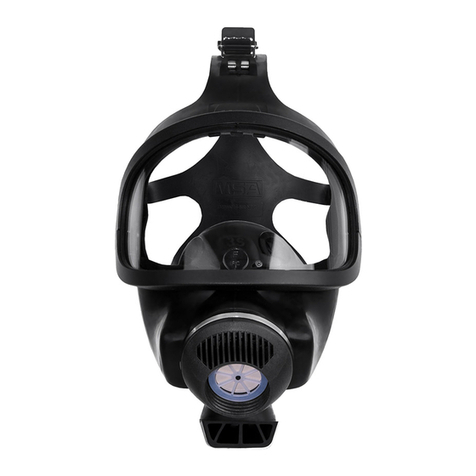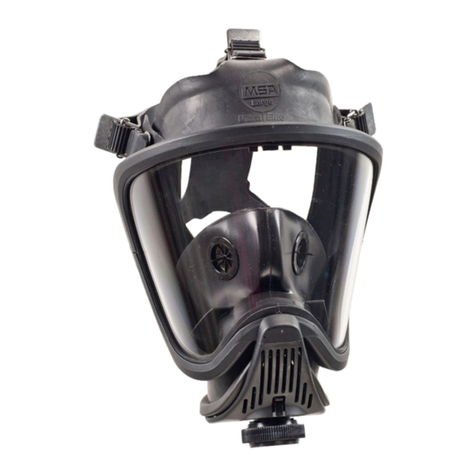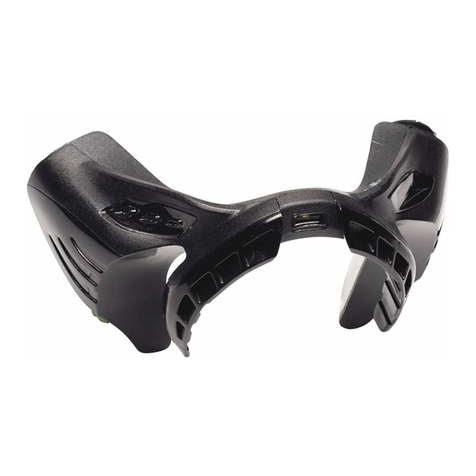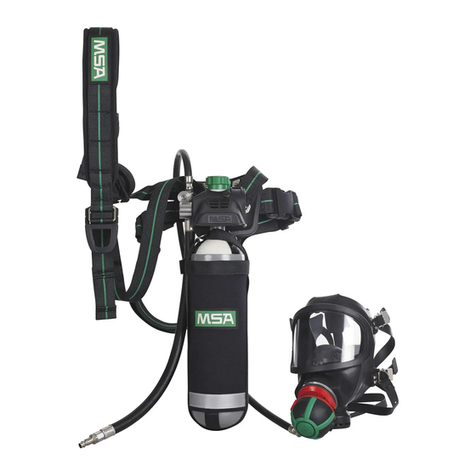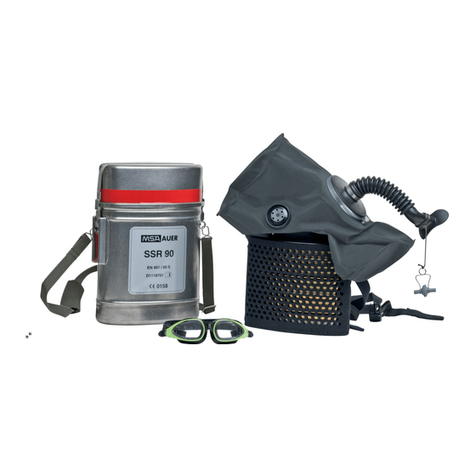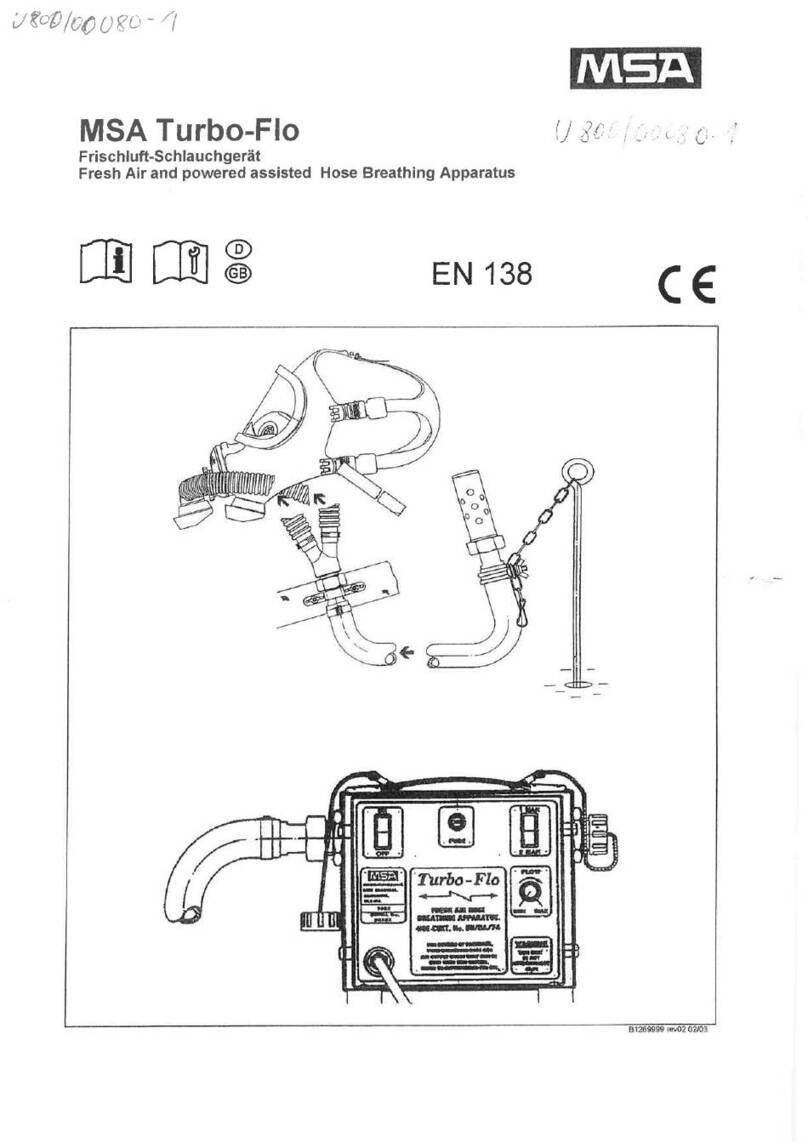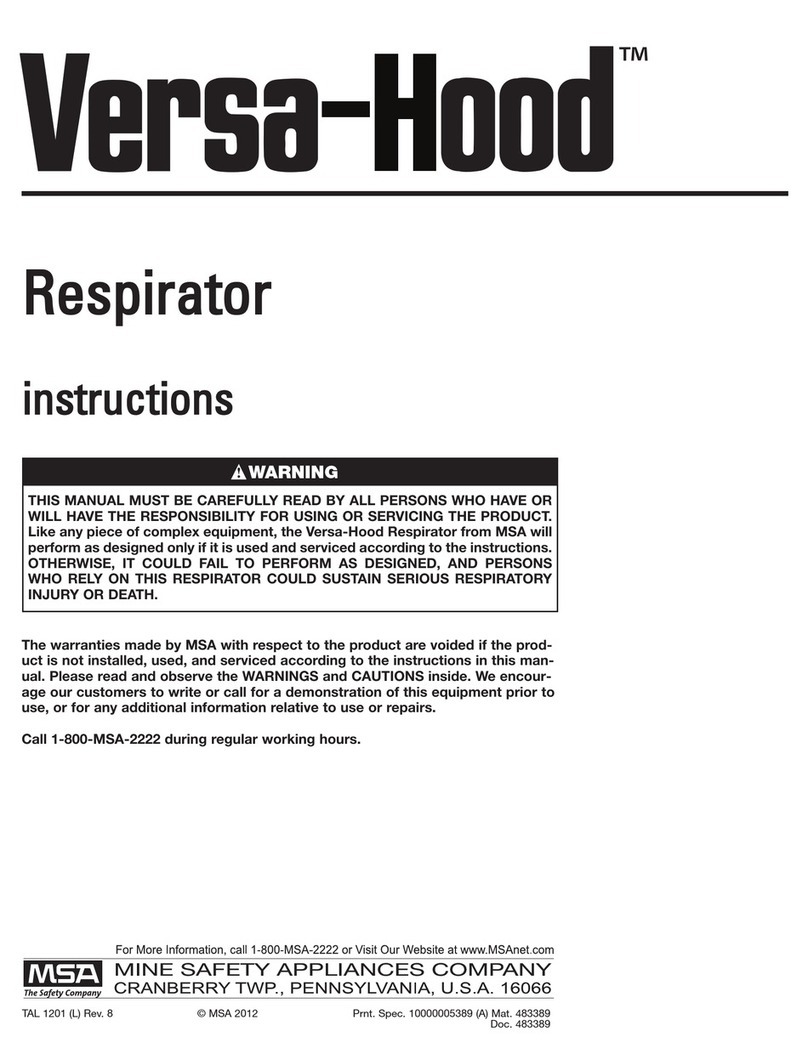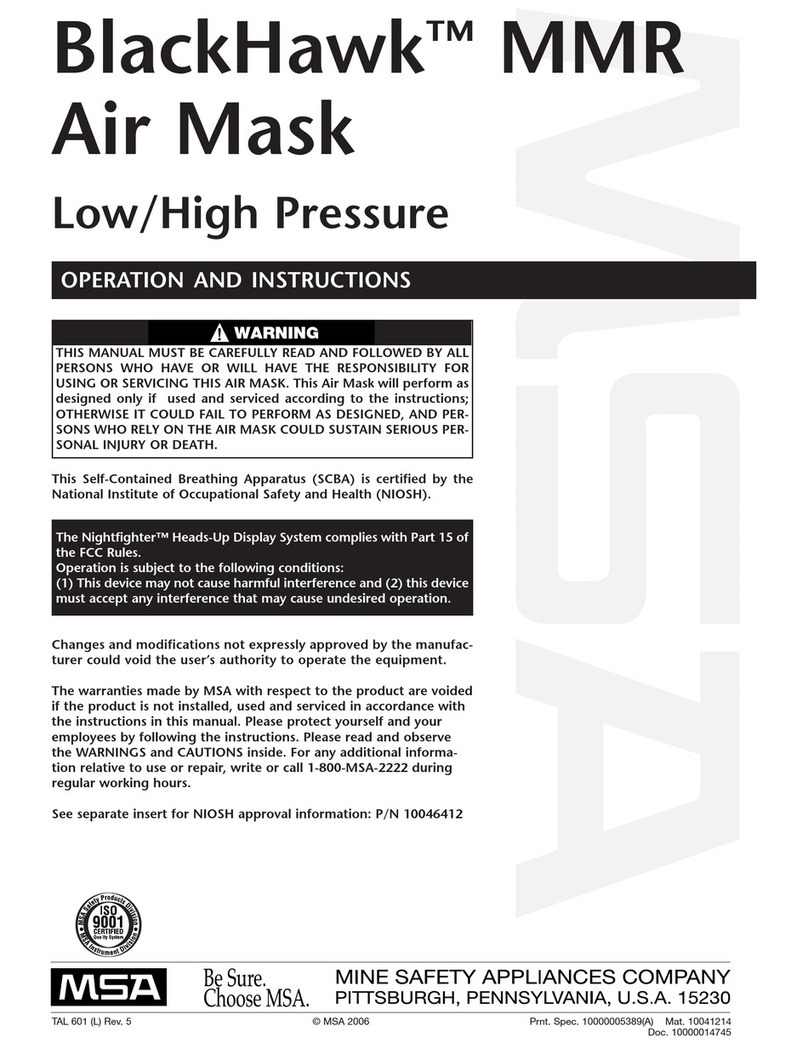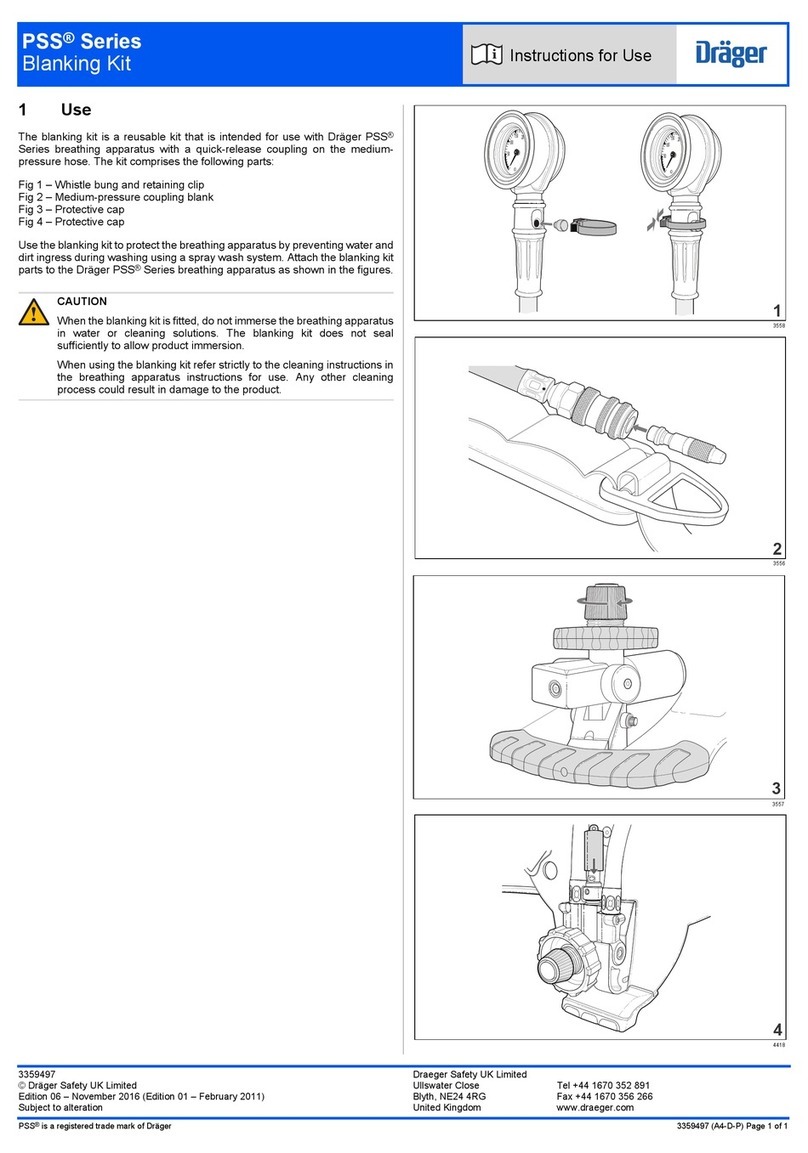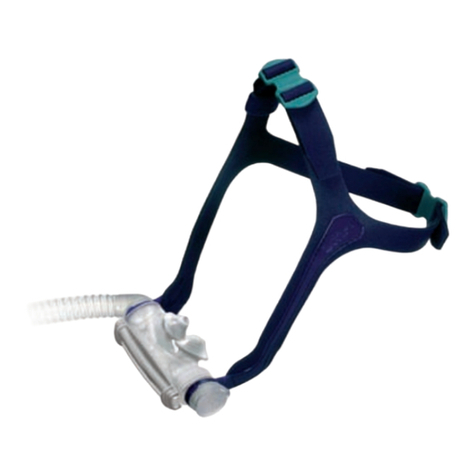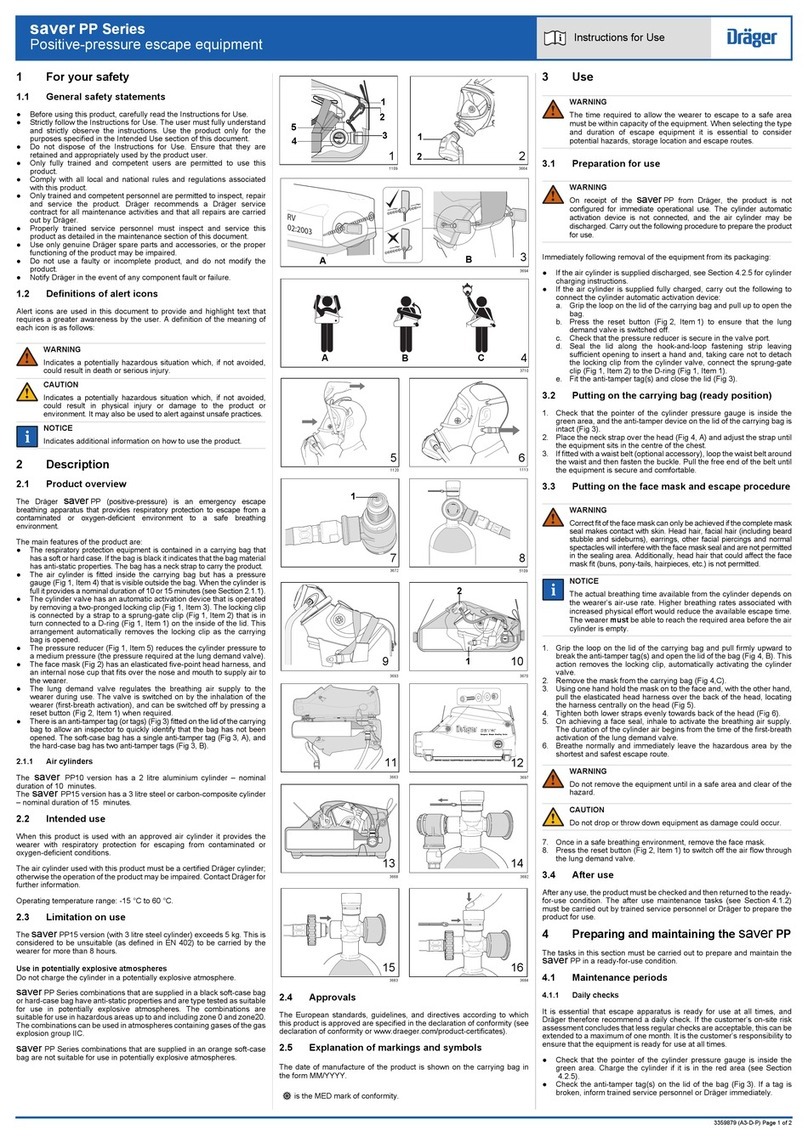
TAL 0110 (L) Rev. 8 - 10020949
INTRODUCTION
medical surveillance. (See OSHA
regulations, Title 29 CFR, Part
1910.134, Sub-part I par. 1910.134
(b) (1)).
2. This respirator will perform as
designed only if used and main-
tained according to the manufactur-
er’s instructions. The Program
Administrator and the users must
read and understand these instruc-
tions before trying to use or service
this product. We encourage our
customers to write or call for infor-
mation on this product before using
it.
3. This respirator may be used only
after proper instruction and training
in its use as specified in OSHA reg-
ulations (Title 29 CFR, Part
1910.134, Sub-part I, par. 1910.134
(b) (3)).
4. This respirator may not be worn in
an atmosphere which is immediate-
ly dangerous to life or health (from
which the wearer cannot escape
without the aid of a respirator).
Under no circumstances should the
respirator be used as an underwater
device.
5. Users must wear suitable protective
clothing and precautions must be
taken so that the respirator is not
worn in atmospheres that may be
harmful to the device.
6. Do not alter, modify, or substitute
any components without the
approval of the manufacturer. Such
alterations will void the NIOSH
approval.
7. Inspect the respirator regularly and
maintain it according to the manu-
facturer’s instructions. Repairs must
only be made by properly trained
personnel.
LIMITATIONS
The OptimAir MM 2K with OptiFilter
Type HE filter cartridge, or Type HE par-
ticulate filter, are approved as high effi-
ciency particulate air filter for powered
air-purifying respirators. Filter does not
remove gases or vapors from the air
supply. No filter is designed for all sub-
stances, Therefore, you must know
what the contaminant is, as well as its
concentration, before selecting a respi-
rator. This respirator does not supply
oxygen. Do not use this respirator
unless the surrounding air contains a
minimum of 19.5 percent oxygen. The
respirator may be used at temperatures
between 0°F and 120°F, and may be
worn under flame-retardant garments. If
used below 40°F, a fully-charged bat-
tery may not operate the motor-blower
for an entire shift.
RESPIRATOR USE LIMITATION
The wearer must comply with the fol-
lowing MSA respirator use limitations:
1. Maximum Use Concentration – Do
not exceed any of the following:
a. 1000 times the exposure limit for
the contaminants present.
b. Immediately dangerous to life or
health (IDLH) concentration for
any contaminant present.
2. The limitations outlined in the appli-
cable NIOSH approval.
3. Any applicable limitation contained
in a standard established by a regu-
latory agency (such as OSHA) with
jurisdiction over the wearer.
4. NIOSH allows this respirator to be
used for protection against a mix-
3
